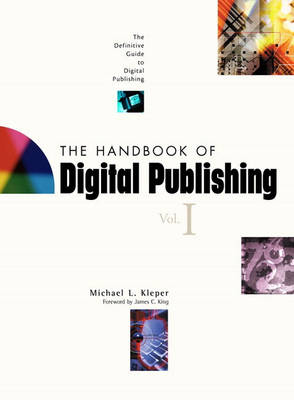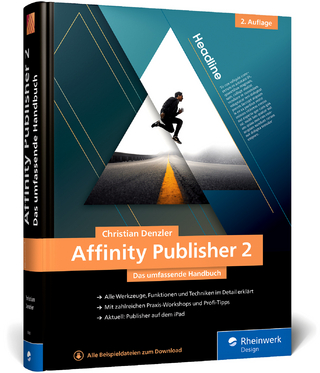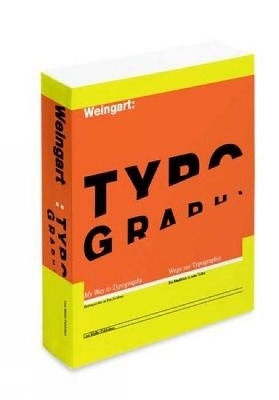
The Handbook of Digital Publishing, Volume I
Prentice Hall (Verlag)
978-0-13-017545-8 (ISBN)
- Titel ist leider vergriffen;
keine Neuauflage - Artikel merken
This is the first volume of the DEFINITIVE guide tothe rapidly changing and growing area of digital publishing, including print, protable digital documents, CD-ROM, multimedia, Web publishing, and some technologies yet to be released. Michael Kleper is the world's foremost authority on this subject, and this is the world's foremost book on it as well.
MICHAEL KLEPER is full professor and member of the Senior Faculty in the Digital Imaging and Publishing Technology Department at the Rochester Institute of Technology. He has 30 years of college teaching and research experience in print, desktop, and electronic publishing, electronic prepress, typography, and page creation. His seven books include The Illustrated Handbook of Desktop Publishing and Typesetting, Second Edition. He edits The Kleper Report on Digital Publishing (www.printerport.com/kdp) which originated in print form in 1979.
I. TYPOGRAPHIC METHODS AND PROCEDURES.
1. Type and Typography.
Typewritten versus Typeset. The Typewritten Legacy: The Typewriter as a Typesetter. The Typewritten Legacy: Why Typeset? Typography: The Art of Typesetting. Point Size. Em Measurement. Relative Units. Typography: Typographic Measurement. Pica Units. Line Measurement. The Size of a Word. Em Measurement. Typography: The Use of Space. Justification. Typography: The Typographic Basics. Line Length. Character Size. Typeface. Interline Spacing. Basic Parameters. Typographic Details. Typeface Geometry. Typographic Lines of Reference. Single Typeface Variations. The Extended Character Set. Typeface Classification. Serif versus Sans Serif. Roman. Blackletter. Old Style. Modern. Square Serifs. Sans Serif. Scripts and Cursives. Decorative and Display. Typeface Recognition. Making Type Easier to Read. The Legibility of Print. The Measurement of Work. Eye Movements. Block Outlines. Character Differentiation. Character Shapes. Type Size. Type Weight. Typographic Guidelines.
2. Typographic Procedures, Rules, and Niceties.
Typographic Treatments and Methods. Accents. Alternate Characters. Ampersand. Anamorphic Reshaping. Backgrounds. Blackletter. Boldface. Book Typography. Book Page Elements. Borders. Boxed Text. Boxes. Brackets. Bullets. Business Forms. Capitals. Character Complement. Closed or Open Dashes. Column Headings. Compaction. Custom Typography. The Dash Family. Dingbat. Drop Caps and Other Paragraph Initials (see also Initials). Ellipses. Figures. Finial. Fixed Spaces. Footnotes. Fractions. Gutter. House Style. Hung Punctuation. Hyphenation. Initials. Kerning. Leaders. Legal Considerations. Letterspacing. Ligatures. Line Length. Line Spacing. Margins. Mark-up. Mark-up Shorthand. Monospaced Font. Optical Spacing. Ordinals. Page Elements. Paragraph Construction. Pi Characters. Picture Credits. Picture Font. Pointer. Primes. Primitive Shapes and Enclosures. Proof Marks. Proofreading Copy for Errors. Proper Name Prefixes Set in All Caps. Punctuation. Quotation Marks. Random Fonts. Reverse Type. Roman Numerals. Runaround. Small Caps. Spacing Considerations. Spacing In. Spacing Out. Superior/Inferior Characters. Swash. Table Construction. Typographic Variation. Uncials. Underline. Word Spacing. Copyfitting. Traditional Typesetting. Using Character Count Information. Copyfitting and the Desktop Publisher. Determining Characters per Pica Counts. Guidelines for Good Typographic Judgment. The Selection of Type. Everything in Moderation. Special Effects Typography.
3. Type on the Desktop.
PostScript. TrueType. Visual TrueType. PostScript and TrueType. Bitmap Fonts. Hinting. QuickDraw GX. Macintosh Font Management. Windows Font Management. Font-Conversion Issues. The Panose System. Font Conversions. Differences in Keyboard Layout. The Fonts That Are Resident in the Output Device. Fonts That Are Not Burned in ROM. What Distinguishes a Low-cost Font from a High-priced Font? Multiple Masters. Type on the Screen: Fonts Designed, Selected, or Modified Specifically for Use on the Web. Pictures of Type on the Screen. Type in Motion. Embedded Type. TrueDoc. OpenType. Font and Style Specification from within HTML. Unicode. SGML. XML.
II. DESIGN AND LAYOUT FOR PAGE AND SCREEN.
4. Beginning with the Page.
What Is the Purpose of Page Design? The Page as a Physical Entity. On the Web. Destination: The Page. Know Your Browser. Anticipating Difference. What We've Learned about Page Construction. The Elements of a Page. Text. Photographs. Defining the Page. The Grid. Master Pages. Style Sheets. Tagging. Templates. Style Manual. Infographics. Glance Box. Charts on the Web. Maps. Infographic Production Steps. Look and Feel. Digital Asset Management. Where Do All of the Files Come From? How Can Digital Assets Be Managed? Why Is This So Important? Digital Brand Building. Ethics. Identification. Policy.
5. Page Design—Destination: Paper or Screen.
From On-the-Desktop to On-the-Web. Web Site Design Considerations. What Makes Web Site Visitors Come Back? Content Is the Number One Attraction. Visitors Look for Signs of Life. Basic Web Design Criteria. Designing for the Screen. From the Framework to the Screen Geometry. Determining What the Site Visitor Sees First. Designing an Efficient Web Site. Information Design. Definition. Information Seeking. Location and Access. Use of Information. Synthesis. Evaluation. Content. Text. Graphics. Consumption. From Print to Print. Selected Assets.
III. DIGITAL IMAGE CREATION, CAPTURE, AND USE.
6. Digital Photography.
Digital Photography without a Digital Camera. Picture Networks. PictraNet Publish and Share. PictureMall. ActiveShare eCircles. Gatherround. Photohighway. PhotoNet. Photographic Simplicity. Silicon versus Silver. The Ultimate Use Should Determine the Initial Characteristics. How a Digital Camera Works. The Recording/Compression Process. Recording Formats. Light Sensitivity. Removable Storage. The Digital Camera, Piece by Piece. The Lens. The Image Capture Element. The Flash. The Body. The Viewing System. The Function Display Panel. The Color LCD Display. The Shutter Button. The Port(s). The AC Power Jack. Storage. Indicator Lights. Internal Power. The Support Software. Stock Digital Photography (Wherein Someone Else Took the Picture). Digital Advantages. Digital Disadvantages. Moving Images Out of the Camera. From Camera to Computer. The Television View. Direct to Print. Direct to Tape. Telecommunications. Wireless Communication. From Storage Media to Another Device. The In-Camera Operating System. Photographic Printing. Photo-Quality and Near-Photo-Quality Printers. Printer Evaluation. Digital Photography and the Ethics of Image Manipulation. Image Integrity. Digital Watermarking. Image Fingerprinting. Secure Digital Content Server.
7. Scanning Technology.
Dynamic Range (Density Range). Maximum Optical Resolution. Noise. Calibration. Scanning Basics: Beginning with the Pixel. Scanning Line Art. Scanning Grayscale for Halftone Reproduction. Scanning Color Images. The Scanning Process. Photo CD.
8. Prefabricated Files for Digital Media Production.
Stock Photography on CD-ROM. The Photographic Imperative. Digital Clip Art versus Digital Photographs. The Advantages of Stock Digitized Photographs. The Publisher's Investment. PhotoDisc. Licensing Rights and Responsibilities. Stock Photography on the Web. From Photo to Clip Art. Digital Clip Art on CD-ROM. Once Formed, Many Times Reformed. Finding What You Need—When You Need It. Electronic Delivery Systems. Image Manipulation. Removing the Obvious. Bringing the Picture into Range. Converting to Another Format. Modifying the Image to Suit a Particular Purpose. Digital Image Management.
IV. ADOBE POSTSCRIPT AND THE PORTABLE DOCUMENT FORMAT (PDF).
9. Adobe PostScript.
The PostScript Graphic Arts Model. How PostScript Attains Output-Device Independence. Writing Simple PostScript Notation. Creating PostScript Files. PostScript Output. PostScript Level 2. PostScript 3. PostScript Extreme (formerly Supra). Late Binding. Native PDF Creation and Processing. Workflow Options. Defining Elements.
10. Adobe PDF: Portable Document Format.
Adobe Acrobat. Paper. PDF (Portable Document Format). PDF Generation. Acrobat Distiller. Acrobat Messenger Software. PDF Source Files. Image Files. Acrobat 4.0 (PDF Version 1.3). Specialized Editorial Tools. Custom Navigation. Links. Bookmarks. Thumbnails. Articles. Destinations. Buttons. Page Manipulations. Security. Digital Signatures. Password Protection. Third-Party Security Solutions. Forms. Acrobat Catalog. Adobe Capture. Web Capture. Multimedia Components. Page Actions. Movies. Sounds. Embedded Fonts. File Size. Acrobat and the Web. Acrobat and E-mail. Acrobat and On-line Services. Acrobat and Graphic Arts Applications. Preflighting PDF. PDFs in Action. Other Portable Digital-Document Applications. The PDF File Structure.
11. High-Resolution Fonts for PostScript Output Devices.
The Fontographer Environment. Using Fontographer.
V. PAGE CREATION FOR PRINT, ELECTRONIC DOCUMENTS, AND THE WEB.
12. Desktop Publishing.
Desktop Publishing Uses. Roots in the Graphic Arts. Benefit One. Benefit Two. Benefit Three. Keyboarding and the Typesetting Process. A Brief History of the Keyboard. The First Typesetting Keyboard. The Typewriter and the Typesetter. Typesetting by Typewriter. TTS and the Typewriter Keyboard Layout. Phototypesetting Machine Development. The Typist and the Early Phototypesetter. Alternate Keyboard Layouts. The Dvorak Keyboard. The Research. The Dvorak Patent. The Dvorak Standard. The Mouse.
13. The Advent of Word Processing.
The Effect of Word Processing on Typesetting. Word-Processing Input. The Author: Originator of Typesetting Input. Pushing the Code Upstream. Typesetting by Word Processor. Moving with the Digital Workflow. Assuming a New Form.
14. Typographic Composition.
Mark-up. Mark-up Shorthand. Mark-up for Color. House Style. Keyboard Mapping. Proofreading Copy for Errors. What Is the Purpose of Proofreading? Who Performs Proofreading? Proofreading Techniques and Tips. Spelling and Grammar Checkers. Readability. What Does Readability Measure? Language Translation. Voice Input Technology. Why Is the Use of Voice Helpful? Practical Applications. Optical Character Recognition. History. OCR and Word Processing. The Basics of OCR. What OCR Can't Read. OCR and Database Publishing. OCR as a Natural Form of Input. Handwriting Recognition.
15. Desktop Publishing Skills and Careers.
Desktop Publishing as a Career. A Recognized Career Area. Publishing Trends. The Digital Publishing Professional. The Early Market. National Skill Standards. Basic Skills Are at the Core. The Standards for Major Imaging Work Areas. Standards for Major Work Areas in Imaging: Job Engineering. Standards for Major Work Areas in Imaging: Image Acquisition. Standards for Major Work Areas in Imaging: Assembly. Standards for Major Work Areas in Imaging: Output. Standards for Major Work Areas in Imaging: Technical Services. What Every Digital Publishing Expert Needs to Know. Preparing Pages for Reproduction. Electronic Prepress. The Digital Publishing Production Cycle.
16. The Page-Creation Production Workflow.
Page Construction. Bringing Page Elements into the Page Construction Environment. Handling Graphics. Creating Page Elements within the Page Construction Environment. Text Handling. Desktop Setup. The Menu Bar. Keyboard Shortcuts. Scripting. Macros. Palettes. The Tool Box. Measurements. Composition Attributes. The Assignment of Styles. Text Line Orientation. Character Fit. Line-Packing Functions. Document Structure. Page Size. Page Spreads. Orientation. Margins. Page Numbering. Page Order. Indexing. Table of Contents. Long Documents. Automatic Layout Adjustment. Graphic Primitives. Table Composition. Page-Element Operations. Color. Layers. Templates. Master Pages. Additions, Extensions, and Plug-ins. Platform Considerations. End Products. Printing. File Export. Damaged Files.
17. Indexing and Index Generation.
What Is an Index? An Index versus a Search. An Index versus a Table of Contents. How an Index Can Benefit a Reader. Computer Processing of Index Entries. Stand-alone or Dedicated. Embedded Indexing. Tagging. Keywording. Automated Indexing. Professional Indexing Tools. Indexing the Web. Indexing Careers and Career Information.
18. Database Publishing.
Why Use a Database? Creating the Database. The Elements of a Database. Database File Construction. The Database Application. Creating a New Layout. Entering Data. Finding Data. Ordering Data. Previewing a Finished Report. Publishing the Data. Tagged Data. Tagging Data. Importing the Tagged Data. Intermediary Solutions: Middleware. Scripting. Data Merging.
19. Specialized Forms of Publication.
Display Advertising Typography. Wizard-Driven Publication Materials. Mathematical, Scientific, and Scholarly Composition. Simplifying the TeX Input Process. Math Setting. Mathematical Computation and Composition. Business Forms for Print, Electronic, and Web Distribution. Processing Documents That Are Lengthy and Complex. Producing Large Format Output.
20. Sight, Navigation, Movement, and Feedback.
Large-Screen Monitor Characteristics. Color Monitors. Screen Size. Digital and Analog Controls. Monitor Adjustments. Monitor Design Technology. Ergonomics. Special Accommodations. Video Cards. LCD Monitors.
Appendix A: Vendor Listing.
Appendix B: Trade Associations, Professional Organizations, and Industry Groups.
Bibliography.
Index.
| Erscheint lt. Verlag | 15.12.2000 |
|---|---|
| Vorwort | Jim King, Frank J. Romano |
| Verlagsort | Upper Saddle River |
| Sprache | englisch |
| Gewicht | 1933 g |
| Themenwelt | Informatik ► Grafik / Design ► Desktop Publishing / Typographie |
| Mathematik / Informatik ► Informatik ► Web / Internet | |
| Sozialwissenschaften ► Kommunikation / Medien ► Buchhandel / Bibliothekswesen | |
| ISBN-10 | 0-13-017545-5 / 0130175455 |
| ISBN-13 | 978-0-13-017545-8 / 9780130175458 |
| Zustand | Neuware |
| Informationen gemäß Produktsicherheitsverordnung (GPSR) | |
| Haben Sie eine Frage zum Produkt? |
aus dem Bereich


